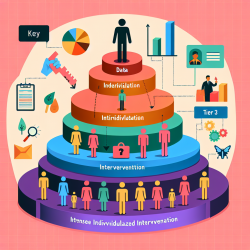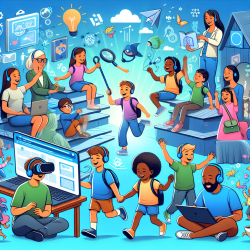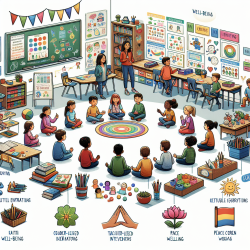Augmentative and alternative communication (AAC) systems offer transformative benefits for nonspeaking autistic individuals and those with complex communication needs (CCN). Despite these benefits, AAC abandonment rates remain high. Recent research by Yau et al. (2024) sheds light on the multifaceted barriers to AAC use from the perspectives of various stakeholders, including parent-carers, educators, and clinicians. This blog aims to help practitioners implement the findings of this research to improve AAC outcomes for children.
Key Barriers to AAC Use
The study identified five main themes that encompass the barriers faced by stakeholders:
- Stakeholder Knowledge: Lack of training and awareness among parents, educators, and clinicians hinders effective AAC use. Parents often struggle with understanding high-tech AAC devices, while clinicians feel inadequately prepared due to insufficient training during their tertiary education.
- Stakeholder Attitudes and Stigma: Negative attitudes and societal stigma towards AAC use can delay intervention. Both parents and clinicians may initially resist AAC due to misconceptions about its impact on speech development.
- Resources: Competing financial and time demands limit the ability of stakeholders to fully engage with AAC. Educators and clinicians often lack the resources to attend training or to provide consistent support.
- AAC User Engagement: User willingness to engage with AAC is a significant barrier. Emotional dysregulation and prompt dependency are common issues that affect user engagement.
- Device Fit: Poorly customized AAC devices can cause sensory overwhelm and physical discomfort, leading to abandonment. Lack of inter-stakeholder communication exacerbates this issue, particularly in school settings.
Practical Recommendations for Practitioners
Based on these findings, practitioners can take several steps to improve AAC outcomes:
- Enhance Training Programs: Provide comprehensive and accessible training for all stakeholders. Tailor training content to the specific needs and knowledge levels of parents, educators, and clinicians.
- Address Attitudes and Stigma: Educate stakeholders about the benefits of AAC and dispel myths. Highlight success stories and involve AAC users in advocacy efforts to reduce societal stigma.
- Improve Resource Allocation: Advocate for better funding and organizational support to enable stakeholders to access necessary training and resources. Encourage flexible funding models that allow for the purchase of spare devices.
- Foster User Engagement: Implement strategies to enhance user willingness to engage with AAC. Use context-bound routines and task-oriented communication to increase user comfort and familiarity with the device.
- Ensure Proper Device Fit: Conduct thorough assessments to customize AAC devices to the user's needs. Facilitate inter-stakeholder communication to ensure that the chosen device fits well within the user's daily environments, especially in schools.
By addressing these barriers through targeted interventions, practitioners can significantly improve the AAC experience for nonspeaking autistic individuals and those with CCN.
To read the original research paper, please follow this link: Comparing and contrasting barriers in augmentative alternative communication use in nonspeaking autism and complex communication needs: multi-stakeholder perspectives.










